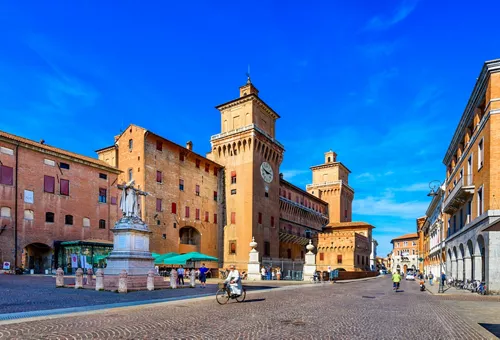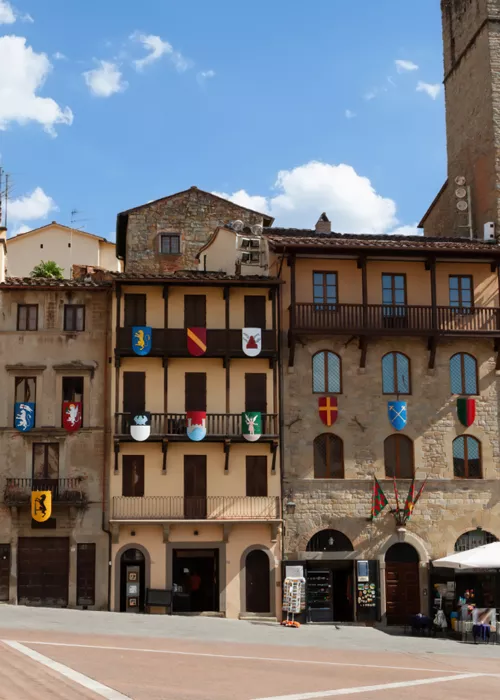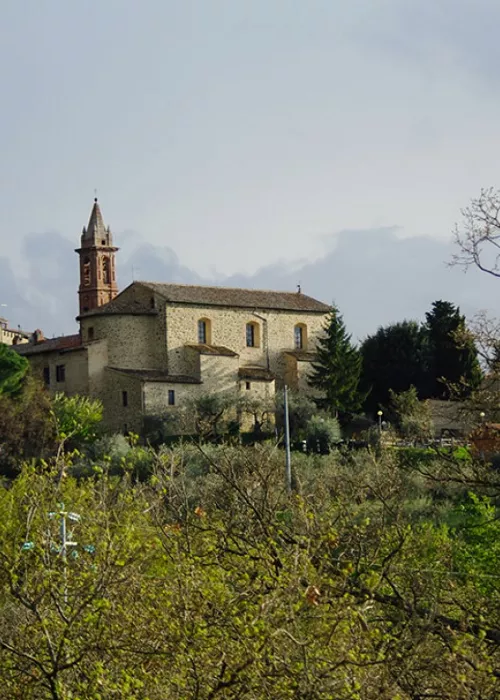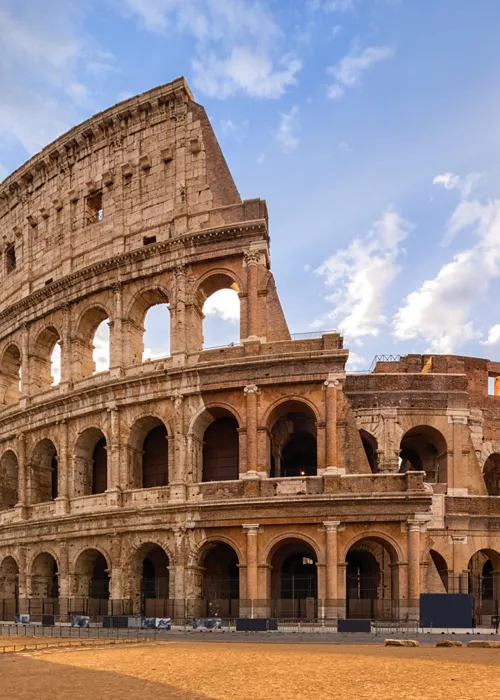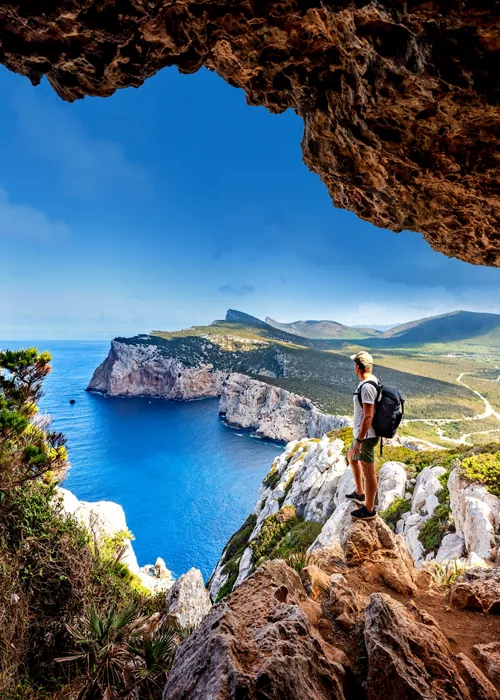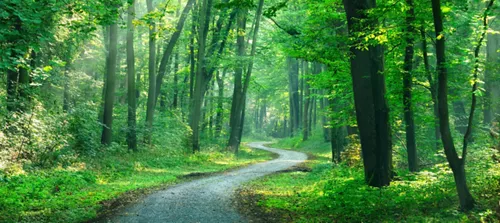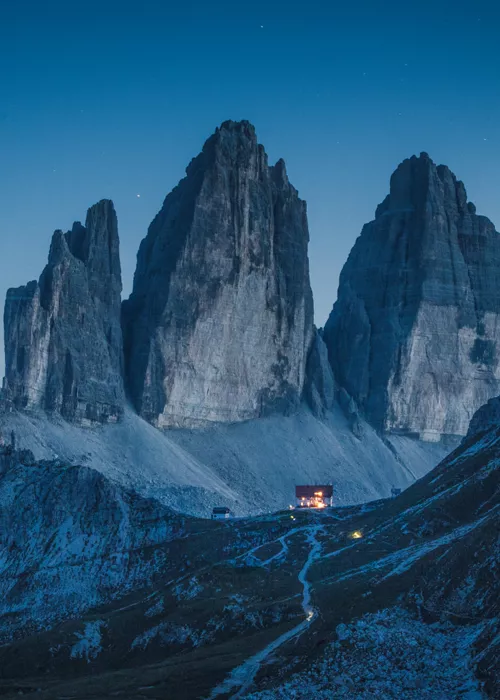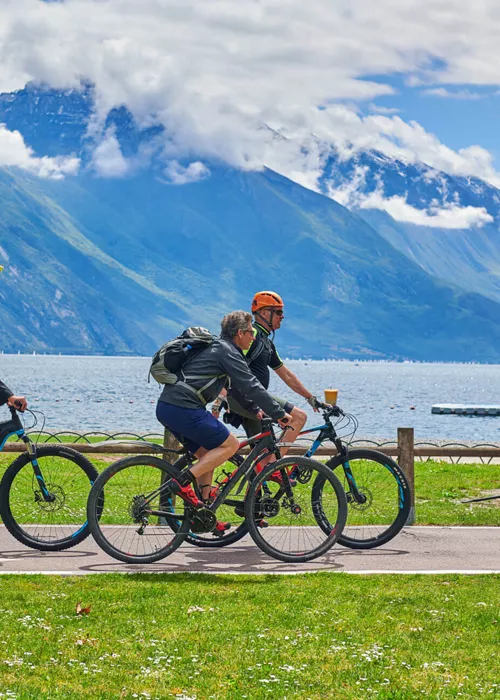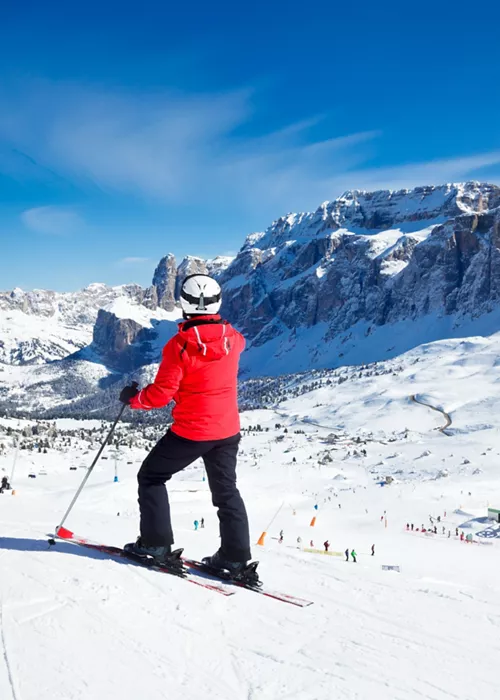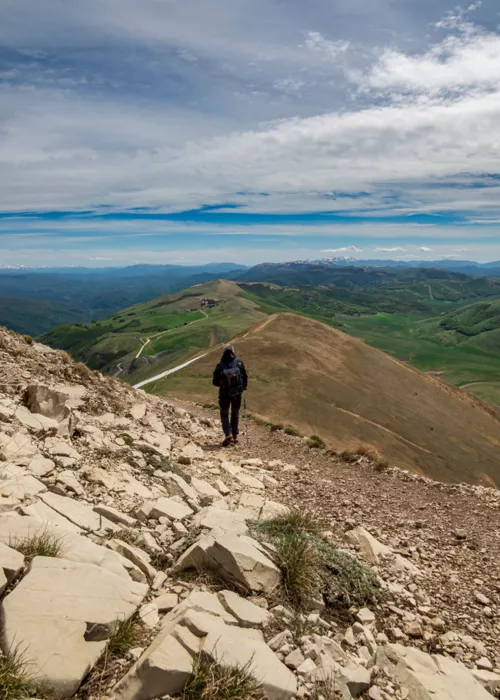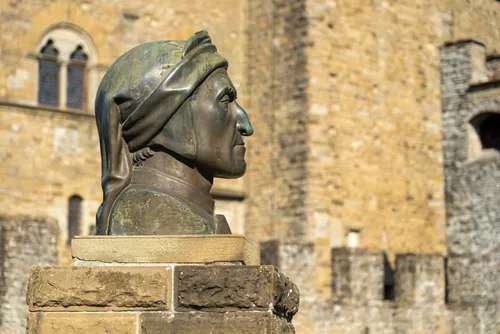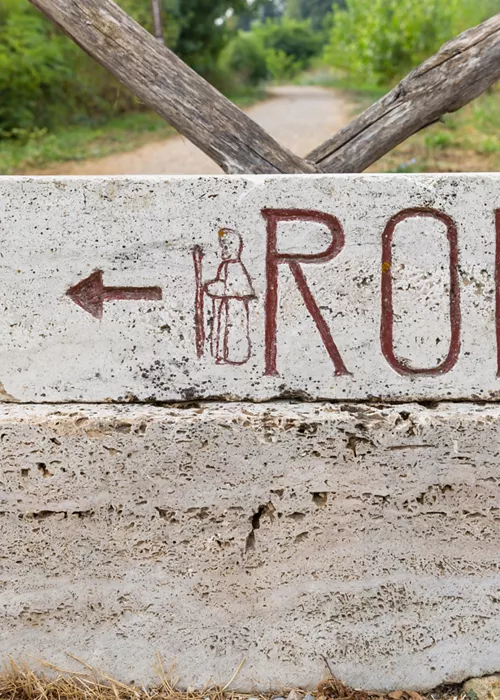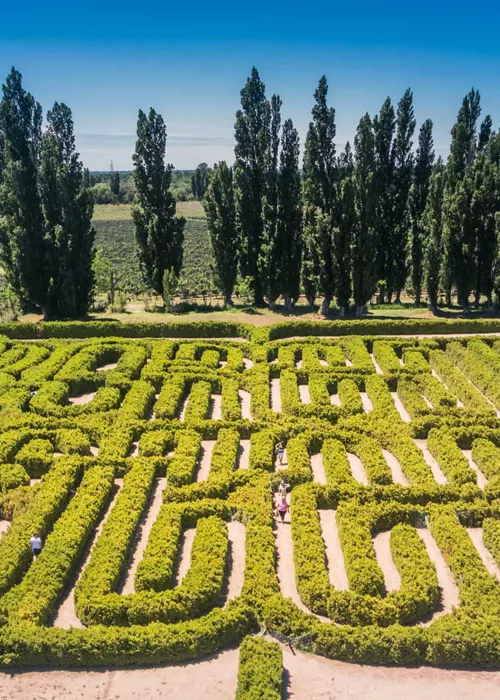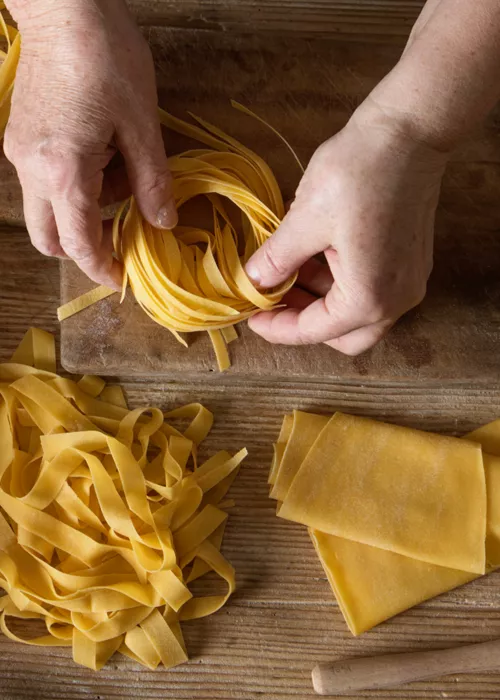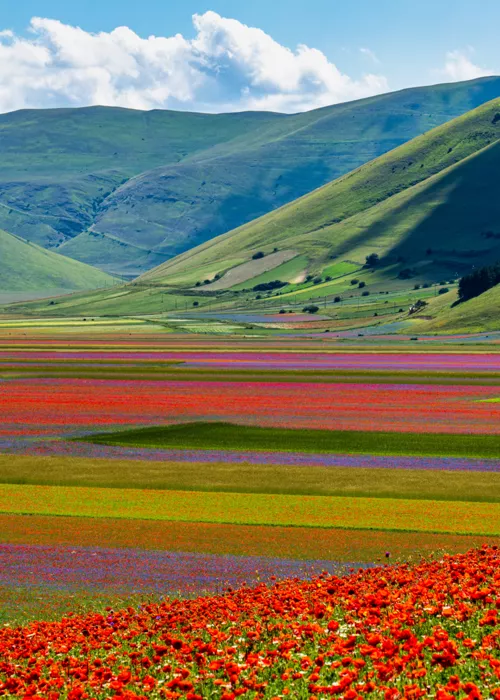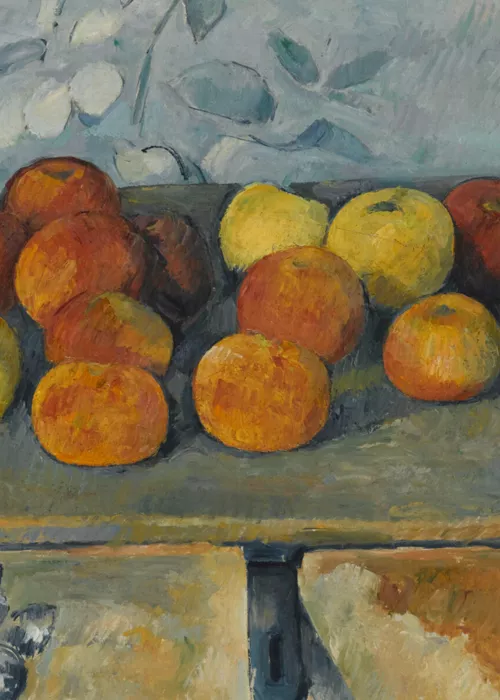The Romea Germanica Way
6 minutes
Would you believe us if we told you that as you walk, you gradually pass through 3 European countries?
The Via Romea Germanica, recognised as a European Cultural Route in 2020, is a route that runs for about 2,200 kilometres from Ausburg to Rome, crossing 3 countries: Germany, Austria and Italy. It consists of a long and exciting journey to discover the route taken in the Middle Ages by Abbot Albert of Stade. Did you know that he meticulously transcribed it in a "logbook" called Annales Stadenses? To discover all the secret stages of this route, grab your backpack and... let's go!
From Ausburg, we cross Germany and Austria and then arrive in Italy. Here, we will visit Vipiteno, Bolzano and Bressanone, with the stunning beauty of the Dolomites, a UNESCO World Heritage Site. We will also visit the beautiful city of Trento with its Buonconsiglio Castle, before reaching the unspoilt Valsugana. We will then immerse ourselves in the enchanting landscape of the Euganean Hills, reaching the delights of Padua and then Ferrara , a UNESCO heritage site, with its Renaissance treasures.
After stopping in Ravenna ,with its UNESCO World Heritage Byzantine wonders, the Way enters the Apennines and we will encounter the Casentinesi Forests , which will envelop us in a sense of peace as they lead us to beautiful Arezzo. Then Umbria will welcome us with its unique wonders, such as Lake Trasimeno and the city of Orvieto.
Can you see it in the distance? We enter Lazio. The route rejoins the Via Francigena leading us to Civita di Bagnoregio and Viterbo, city of the Popes. One final effort... and we will arrive in Rome, at the spectacular St. Peter's Square. Our extraordinary journey through Europe ends here.
The Romeo Germanica Way in Trentino Alto Adige

The Romeo Germanica Way is a large ridge that connects the North Sea to Rome and, via the Via Francigena del Sud, with the Mediterranean and the Holy Land.
After crossing Germany and Austria, the path enters Italy through the Brenner Pass and, following the Eisack river, passes through Vipiteno and Bressanone to reach Bolzano, where the Eisack plunges into the Adige.
Vipiteno welcomes us with its colourful houses that add a sweet touch to the historic centre of the town. Enriched by the extraction of minerals, the town has always been a place of transition between Europe and the Mediterranean. A unique and elegant atmosphere envelops us as we reach Bressanone: the majestic Baroque Cathedral and the Gothic Bishop's Palace with its cycles of paintings speak of timeless wealth and refinement. Dazzled by the beauty of the Dolomites, a UNESCO World Heritage Site, we arrive in Bolzano where north and south, Mediterranean and Alpine meet, creating an irresistible and inimitable combination that reveals itself in the architecture, art and cuisine.
Following the course of the water, we reach Trento, where the Brenta welcomes us with its waves and, passing throughSalorno, takes us to Borgo Valsugana, a few kilometres from the border with Veneto.
Trento impresses us with how it combines its alpine soul with typical Italian elegance. The wonderful Renaissance frescoes that decorate the façades of the historic buildings lead us to Piazza Duomo, the heart of the city. We pass through Salorno, under the austere and protective gaze of its castle, perched on a sharp rocky spur, and reach Borgo Valsugana. This precious riverside town, nestled in a stunningly beautiful valley, entrusts us to its river, the Brenta, which ferries us towards Veneto.
The Romeo Germanica Way in Veneto

Following the clear waters of the Brenta River, we pass through Bassano del Grappa, where an exciting visit to the wooden bridge and the distilleries that have made it so famous help us to understand and savour the town's authentic soul. The gentle flow of the river then ferries us to Padua.
The city appears to us from afar with the unmistakable domes of the Basilica of San Antonio, here simply known as the Basilica of the Saint. Padua, home to one of the oldest universities in Europe, is a treasure trove of culture and art: the Basilica of the Saint, the magnificent Scrovegni Chapel, where Giotto executed sublime paintings, and the Baptistery of the Cathedral with frescoes by Giusto de' Menabuoi.
Continuing along the way, we reach Rovigo, passing under the watchful eye of the Federician Castle of Monselice. From beautiful Rovigo, the stretch is short and once we reach Polesella, our path crosses the Po river and reaches Emilia Romagna.
The Via Romeo Germanica in Emilia Romagna

Entering Emilia Romagna across the Polesella bridge, the route heads towards Ferrara. The city experienced a period of great splendour under the Este family, who enlarged it and perfected its urban layout. The beauty of its buildings and the orderly layout of its streets has ensured its inclusion on the list of UNESCO World Heritage Sites.
Just outside Ferrara, the route passes through the Po Delta Regional Park and the Comacchio Valleys to reach Ravenna. The sea, nature and eight UNESCO sites make this city a treasure chest of beauty and culture. A varied cultural heritage such as the precious mosaics of San Vitale and the Mausoleum of Galla Placidia, the monumental basilicas of Sant'Apollinare in Classe and Sant'Apollinare Nuovo, the Mausoleum of Theodoric and the Tomb of Dante, are just some of the places not to be missed in this magnificent city.
The path continues towards Forlì and then arrives, near the Casentinesi Forest Park, in Bagno di Romagna, a town that, with its thermal springs, has always been a meeting point of peoples and cultures and is the last stop on our journey in Emilia Romagna.
The Romeo Germanica Way in Tuscany

Situated in the Casentinesi Forests National Park and bordering the Sanctuaries of Camaldoli and La Verna, Vallesanta is part of the province of Arezzo and currently has a population of 250. 250 people who uphold their traditions with obvious pride and passion. Enchanted by the spirit of these people, we continue our journey under the reassuring gaze of Subbiano castle and then reach Arezzo. From the top of its hill, the city dominates the surrounding valleys and, after a short climb, welcomes us with its magnificent square, the turreted houses, the precious cathedral, the frescoes by Piero della Francesca and the sublime Crucifix by Giotto preserved in the church of San Domenico. Our destination is drawing nearer, and after passing through Castiglione Fiorentino and Cortona, we reach Castiglion del Lago, on the shores of Lake Trasimeno... and we are now in Umbria.
The Romeo Germanica Way in Umbria

The Romeo Germanica Way skims Umbria, running along only a short stretch of it, but one that is certainly rich in history and natural and artistic beauty.
Located on a promontory that juts out into the waters of Lake Trasimeno, Castiglion del Lago owes its name to the Castello Leone castle that Frederick II built there. The lake is an integral part of the village and fills it with timeless charm. The next stop is Città della Pieve, a medieval town that feels like something out of a fairy tale: wandering through the narrow streets of the historical centre is a delightful experience, immersed in the sounds of the past and the sweet and pungent scent of saffron, which has always enriched the local cuisine.
Passing through Ficulle, you will then reach Orvieto. The city looks majestic from afar. Located on a tufa bank, it dominates the valley. Entering the city is like leaping back in time: the narrow streets, steep climbs and stairs lead to a majestic space dominated by the dazzling presence of the Cathedral, dedicated to Santa Maria Assunta. A city to be discovered, an artistic heritage that seems never to end, and a masterpiece of engineering, a visit to Saint Patrick's Well is not to be missed.
The Romeo Germanica Way in Lazio
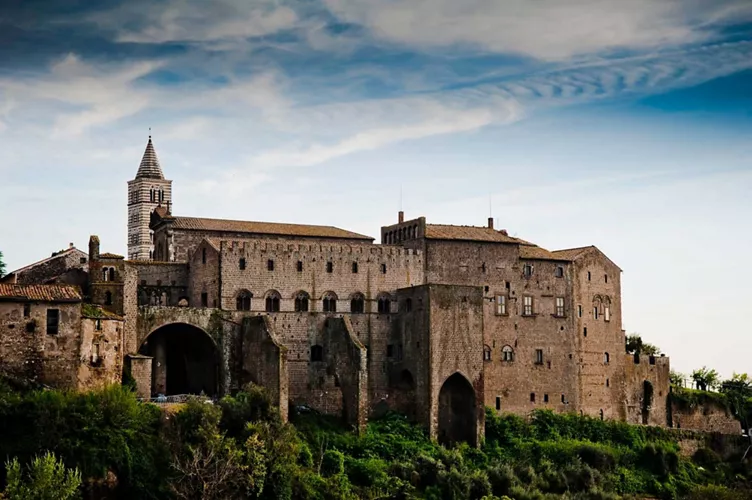
Leaving behind Umbria and the cheerful magnificence of Orvieto, the way enters Lazio and, perhaps as a warning to the pilgrim, reaches Civita di Bagnoregio, 'the dying town'.
The route continues in Tuscia and, passing through Montefiascone, reaches Viterbo, the city of the Popes. The historical centre of Viterbo is a true medieval jewel, and its position as a transit point has made it a crossroads for peoples, and therefore for arts, traditions and cultures. The Palace of the Popes, the cathedral, and the various noble palaces enrich this city with a unique charm.
Leaving Viterbo, the way passes through Vetralla and reaches Sutri: an ancient city known as "the gateway to Etruria", it represented one of the main Etruscan bulwarks against the Roman advance over the centuries. Over the centuries, it became an important place for the passage of goods and pilgrims up to the Middle Ages and beyond, when the city became the first nucleus of the possessions of the Papal State.
By now we have almost reached the end of our journey. With the haste of one who is about to reach his goal, the pilgrim reaches the town of Campagnano di Roma and, from there, La Storta, an ancient station post for wayfarers who needed to change horses and rest.
The Romeo Germanica Way has reached its halfway point: we are already in Rome!





